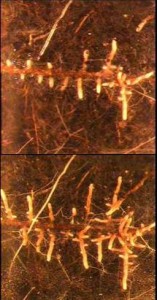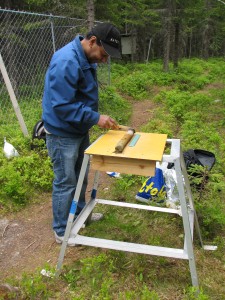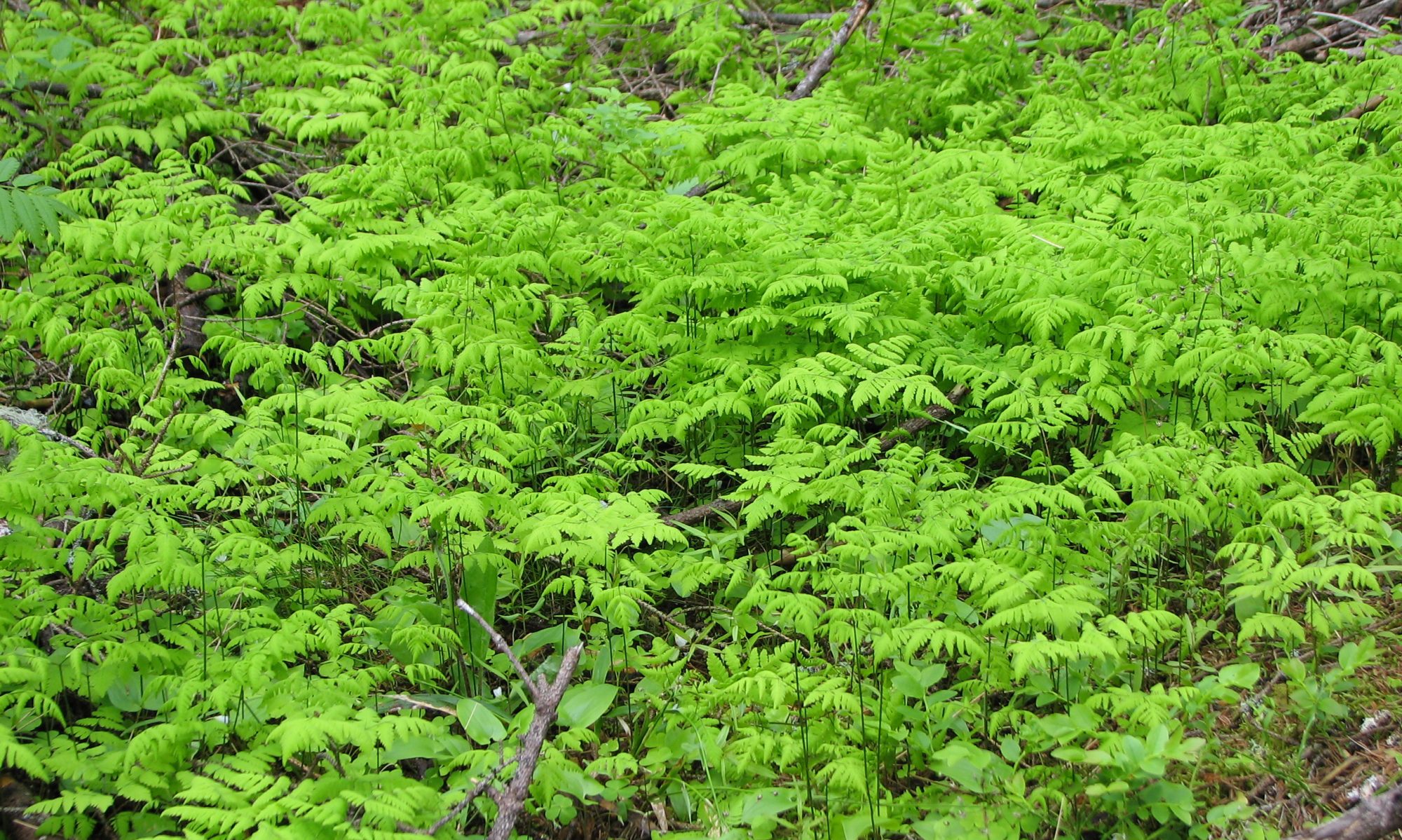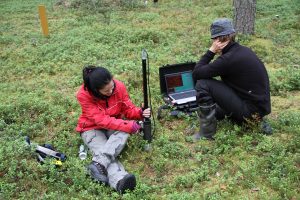Research in root ecology
Quantification and drivers for belowground carbon input in boreal forests Yiyand Ding, Liisa Kulmala. Pauliina Schiestl-Aalto & Heljä-Sisko Helmisaari 2021
Fine root turnover and carbon input into soil in relation to site fertility H-S. Helmisaari & Jaana Leppälammi-Kujansuu & Yiyang Ding, funded by Finnish sources and CAS 2015-2021
Turnover rate of roots and mycelia in boreal forests – significance of species, site and climate
H-S. Helmisaari & Jaana Leppälammi-Kujansuu
Academy of Finland funding in 2012-2016
Long-term effects of soil warming on fine root and mycorrhizal mycelia turnover in boreal forests
H-S. Helmisaari & Jaana Leppälammi-Kujansuu
Maj and Tor Nessling Foundation funding in 2009-2012
Age of tree root and understorey rhizome carbon across ecological gradients in boreal forests – radiocarbon isotope approach
H-S. Helmisaari & Shambhu P. Sah
Academy of Finland funding in 2008-2011

Background
Over two thirds of the carbon in land ecosystems is belowground, mostly in forest soils (peatlands and upland soils). According to climate predictions, exceptional weather phenomena (e.g. drought during growing season, storms) will increase in Europe and affect forest carbon balances.
Limited understanding of fine root turnover time is a key constraint in quantifying terrestrial carbon cycling and predicting the impacts of global environmental change. Fine roots and their mycorrhizas take up nutrients and use photosynthesized carbon for their growth and maintenance, as well as transport carbon and nutrients into forest soil in root litter and exudates. Site, soil, climate and environmental factors affect the growth and longevity of fine roots and mycorrhizas both directly and indirectly through the allocation of carbon, but the relationship of fine roots and mycorrhizas and these factors is not yet well known.
Aims
The aim of the root dynamics research group is to increase understanding on the function of fine roots of trees and understorey, their relationships to the environmental factors and their interaction with the aboveground plant parts. The results help to understand the ecosystem effects of environmental changes or forest management. They also serve national and global forest carbon balance modeling, and reporting of the greenhouse gas balances of Finland, for example.
A minirhizotrone camera is lowered into a tube. Photo: H-S. Helmisaari.
Implementation
The growth dynamics and longevity of fine roots of different tree species and understorey are studied in Scots pine, Norway spruce and silver birch stands in different sites in Finland. The effects of long-term increase in soil temperature on fine roots was studied jointly with the researchers from the Swedish University of Agricultural Sciences in a Norway spruce stand in northern Sweden. We use several methods for studying the dynamics of fine roots and their mycelia: soil cores, minirhizotrones, mycelia ingrowth bags and carbon and nitrogen isotopes.
In minirhizotrone research fine roots are filmed each month during several growing seasons with a special digital camera which is moved in transparent tubes placed in soil. The lengths, diameters and status (new, living, dead, disappeared) of tree and understorey fine roots are recorded with a special program, and statistical analyses carried out
Radiocarbon isotopes is a method which we used for determining the age of structurally bound carbon in roots. The radiocarbon approach takes advantage of the elevated levels of 14C in atmospheric carbon dioxide that resulted from thermonuclear weapons testing in the early 1960s. To test the reliability of the radiocarbon method for determining root age, we analysed our archive fine roots with known maximum age. We also compared the radiocarbon results on fine root C age with our results on fine root longevity using other methods on the same sites.


Cooperation
Dr. Ivika Ostonen & prof. Krista Lõhmus University of Tartu
Dr. Naoki Makita, Faculty of Science, Shinshu University
Dr. Karna Hansson and Prof. Dan Berggren Kleja and Dr. Mats Fröberg, Swedish University of Agricultural Sciences
Dr. Hojka Kraigher, Slovenian Forest Research Institute; a joint project “Fine root and mycorrhizal mycelia turnover role in carbon dynamics under climate change” 2012-2013
Dr. Charlotte Bryant, NERC Radiocarbon Laboratory, Scotland
Dr. Maija Salemaa, Finnish Forest Research Institute
Earlier network cooperation: Cost-network FP0803 Belowground carbon turnover in European forests, 2009-2013.
Results – some recent publications and presentations
Ding, Y., Leppälammi-Kujansuu, J., Salemaa, M., Schiestl-Aalto, P., Kulmala, L., Ukonmaanaho, L., Nöjd, P., Minkkinen, K., Makita, N., Železnik, P., Merilä, P., Helmisaatri, H-S. 2021. Distinct patterns of below- and aboveground growth phenology and litter carbon inputs along a boreal site type gradient. Forest Ecology and Management 489 (2021) 119081 (open access)
Prescott, C.E., Grayston, S.J., Helmisaari, H-S., Kastovska, E., Körner, C., Lambers, H., Meier, I.C., Millard, P., Ostonen, I. 2020. Surplus Carbon Drives Allocation and Plant-Soil Interactions (Opinion article). Trends in Ecology and Evolution 9 ( open access)
Ding, Y., Schiestl-Aalto, Helmisaari, H-S., Makita, N., Ryhti, K., Kulmala, L. 2020. Temperature and moisture dependence of daily growth of Scots pine (Pinus sylvestris L.) roots in southern Finland. Tree Physiology 40: 272-283 (link)
Solly, E.F., Brunner, I., Helmisaari, H-S., Herzog,C., Leppälammi-Kujansuu, J., Schöning, I., Schrumpf, M., Schweingruber, F.H., Trumbore, S.E., Hagedorn, F.I. 2018. Unravelling the age of fine roots of temperate and boreal forests. Nature Communications (2018) 9:3006 (link).
Meier, I.C., Godbold, D., Helmisaari, H-S.M., Ostonen, I., Soudzilovskaia, N.A. & Prescott, C.E. 2019. Roots and rhizospheres in forest ecosystems: Recent advances and future challenges. Forest Ecology and Management. 431: 1-5 (open access).
Ding, Y., Leppälammi-Kujansuu, J. & Helmisaari, H-S. 2019. Fine root longevity and below- and aboveground litter production in a boreal Betula pendula forest. Forest Ecology and Management 431: 17-25 (link).
Ostonen, I., Truu, M., Helmisaari, H-S., Lukac, M., Borken, W., Vanguelova, E., Godbold, D., Lõhmus, K, Zang, U., Tedersoo, L., Preem, J-K., Rosenvald, K., Aosaar, J., Armolaitis, K., Frey, J., Kabral, N., Kukumägi, M., Leppälammi-Kujansuu, J., Lindroos, A-J., Merilä, P., Napa, Ü., Nöjd, P., Parts, K., Uri, V., Varik, M. & Truu, J. 2017. Adaptive root foraging strategies along a boreal-temperate forest gradient. New Phytologist, 215: 977-991.
Lehtonen, A., Palviainen, M., Ojanen, P., Kalliokoski, T., Nöjd, P., Kukkola, M., Penttilä, T., Mäkipää, R., Leppälammi-Kujansuu, J. and Helmisaari, H.-S. 2016. Modelling fine root biomass of boreal tree stands by using site and stand variables. Forest Ecology and Management 359: 361–369 (pdf).
Helmisaari, H-S., Leppälammi-Kujansuu, J., Sah, S., Bryant, C. & Kleja, D.B. 2015. Old carbon in young fine roots in boreal forests. Biogeochemistry 125: 37-46 (pdf).
Lim, H., Oren, R., Palmroth, S., Torngern, P., Mörling ,T., Näsholm, T., Lundmark, T. & Helmisaari, H-S., Leppälammi-Kujansuu, J. & Linder, S. 2015. Inter-annual variability of precipitation constrains the production response of boreal Pinus sylvestris to nitrogen fertilization. Forest Ecology and Management 348: 31-45.
Leppälammi-Kujansuu, J., Aro, L., Salemaa, M., Hansson, K., Berggren Kleja, D., & Helmisaari, H-S. 2014. Fine root longevity and carbon input into soil from below- and aboveground litter in climatically contrasting forests. Forest Ecology and Management 326:79-90 (pdf).
Leppälammi-Kujansuu, J., Salemaa, M., Kleja, D.B., Linder, S. & Helmisaari, H-S. 2014. Fine root turnover and litter production of Norway spruce in a long-term temperature and nutrient manipulation experiment. Plant and Soil 374: 73-88 (summary).
Earlier seminars
In December 2014 we organized a seminar Fine roots and mycorrhizas in changing environment. Seminar program.
In October 2013 we organized a seminar Roots and soil carbon – latest knowledge on fine root traits, lifespan and litter production in forest soils. Seminar program.

